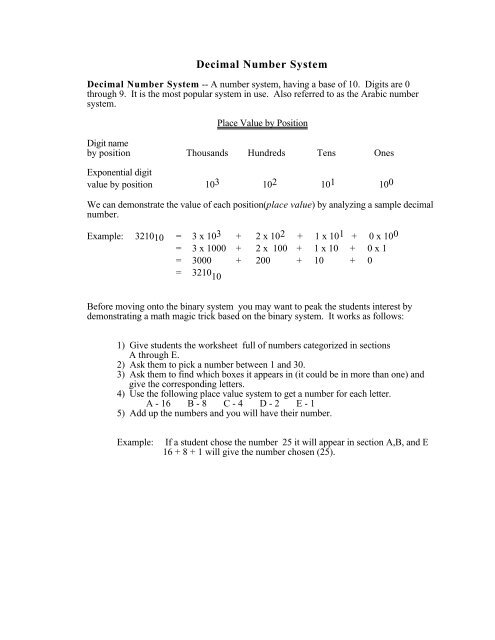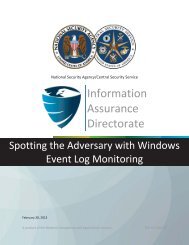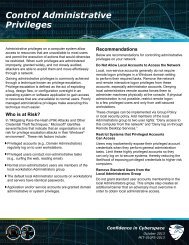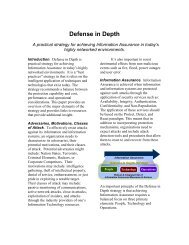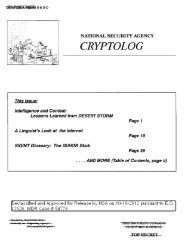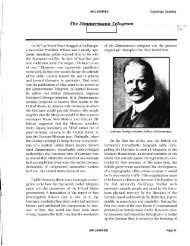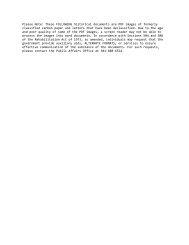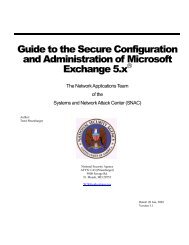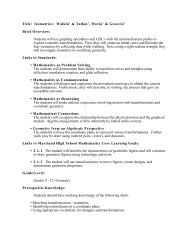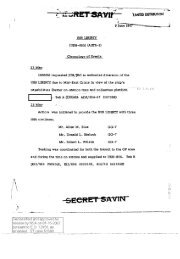Title: Talking with Machines--Binary Conversions Brief Overview ...
Title: Talking with Machines--Binary Conversions Brief Overview ...
Title: Talking with Machines--Binary Conversions Brief Overview ...
You also want an ePaper? Increase the reach of your titles
YUMPU automatically turns print PDFs into web optimized ePapers that Google loves.
Decimal Number System<br />
Decimal Number System -- A number system, having a base of 10. Digits are 0<br />
through 9. It is the most popular system in use. Also referred to as the Arabic number<br />
system.<br />
Place Value by Position<br />
Digit name<br />
by position Thousands Hundreds Tens Ones<br />
Exponential digit<br />
value by position 10 3 10 2 10 1 10 0<br />
We can demonstrate the value of each position(place value) by analyzing a sample decimal<br />
number.<br />
Example: 321010 = 3 x 10 3 + 2 x 10 2 + 1 x 10 1 + 0 x 10 0<br />
= 3 x 1000 + 2 x 100 + 1 x 10 + 0 x 1<br />
= 3000 + 200 + 10 + 0<br />
= 3210 10<br />
Before moving onto the binary system you may want to peak the students interest by<br />
demonstrating a math magic trick based on the binary system. It works as follows:<br />
1) Give students the worksheet full of numbers categorized in sections<br />
A through E.<br />
2) Ask them to pick a number between 1 and 30.<br />
3) Ask them to find which boxes it appears in (it could be in more than one) and<br />
give the corresponding letters.<br />
4) Use the following place value system to get a number for each letter.<br />
A - 16 B - 8 C - 4 D - 2 E - 1<br />
5) Add up the numbers and you will have their number.<br />
Example: If a student chose the number 25 it will appear in section A,B, and E<br />
16 + 8 + 1 will give the number chosen (25).


